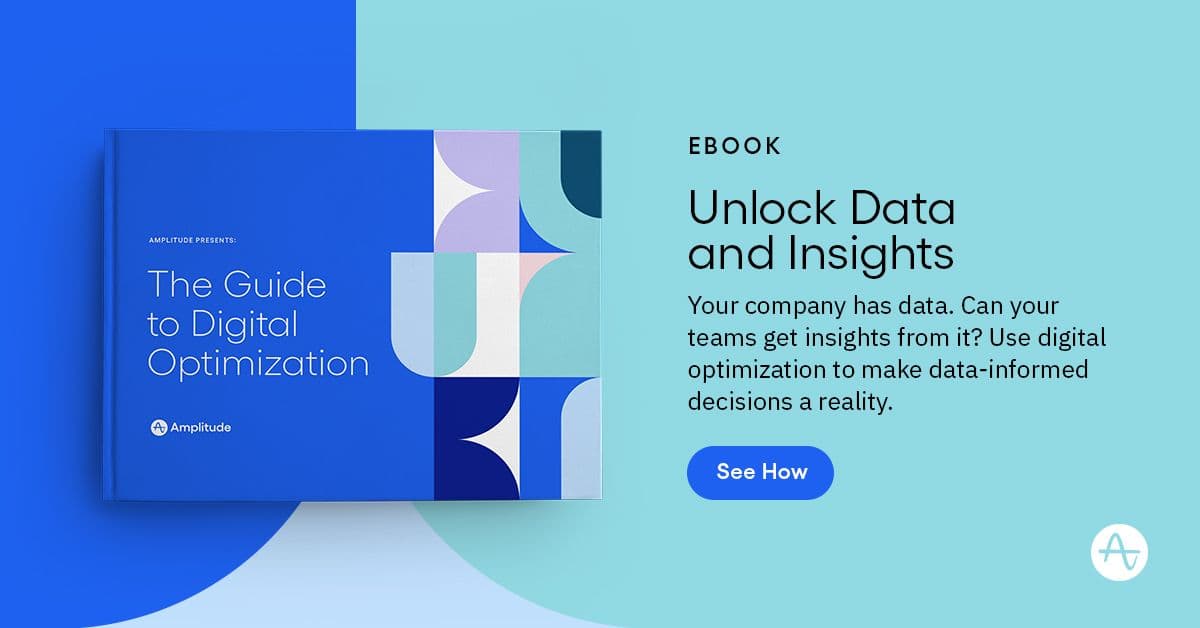How Cafeyn Gained Operational Efficiency by Increasing Data Access
How we reduced the burden on our data team at Cafeyn by improving the data culture throughout the organization.
It’s a story as old as the digital age: Companies want to better understand their customers and product users, but they find it hard to get the information they need to make informed decisions. The data team is overloaded—or in some cases, a sole data analyst—and doesn’t have the right tools to answer data questions quickly. Teams can’t move fast enough to significantly impact the business and continue to operate mainly in the dark.
It’s a vicious cycle, but this reality doesn’t necessarily have to be the norm, as Cafeyn proved when we put an end to this cycle back in 2019. Cafeyn is the leading press platform in Europe, offering seamless access to local and international content in different formats on all devices. The company has more than 2.5 million users across France, Belgium, The Netherlands, United Kingdom, Luxembourg, Italy, Canada, Ireland, and the United States and has established collaborations with more than 500 publishers and content providers worldwide offering more than 2 500 newspapers, magazines titles, newsfeeds, and other pure player content brands, like Business Week, Time Magazine, The Guardian, Paris Match, Libération, Elle, de Volkskrant, Süddeutsche Zeitung. Since then, Cafeyn has gained enormous efficiency and created a healthy data culture that completely changed our operational approach. I’m grateful to have been at least a small part of our success.
Enriching our data environment
I joined Cafeyn five years ago as a data analyst. My first duties were to create a more robust system to generate publisher reports as well as build our internal data team. Cafeyn also wanted to get a better understanding of the activity of its users and analyze their consumption habits. Following the fast growth of Cafeyn I also took the responsibility to create self-serve analytics tools/dashboards to enable operational teams to have instant access to the data they needed to make decisions.
Our first step was to develop better tracking capabilities. We had backend data, but we adopted Segment to implement tracking in our frontend. Then, we stored everything in Snowflake. These platforms enriched our data environment but didn’t do much to make the data more usable by everyone.
Our product managers are laser-focused on creating a better experience for our users, but to do that, we need to ask the right questions and turn to data for the answers. Using these answers as a touchpoint, they work hard to spot bugs, look for potential UX optimization, and develop features that better answer our customer’s usages. We needed a platform to automate frivolous tasks, deep-dive product analytics, and focus on other value-driven initiatives for the company.
Not only was Amplitude intuitive, but its ability to plug directly into Segment meant we could make sense of massive data sets almost instantaneously.
There was a lot to consider moving forward, and we had many needs to address. But it didn’t take long before Amplitude emerged as the option that checked everyone’s boxes. Not only was Amplitude intuitive, but its ability to plug directly into Segment meant we could make sense of massive data sets almost instantaneously.
Leveraging Amplitude across the company
As soon as we adopted Amplitude, we saw it spread throughout the company for a wide range of daily use cases:
- The data team uses Amplitude to answer stakeholder questions, monitor user activity, and identify product trends.
- The product team uses Amplitude to answer specific product queries, especially those related to new features like audio articles or related upgrades.
- The marketing acquisition team relies on Amplitude to manage our user funnel and optimize our acquisition strategies.
- The partnership teams work on managing B2C or B2B2C partnerships end-user’s activities based on data in Amplitude.
- The international team logs in to Amplitude to understand where trends and reading habits from our international users.
- The tech team integrates with Amplitude to monitor tracking in test environments and production.
- The editorial team plugs into Amplitude to monitor the results of their editorial work to see what’s working and what’s not.
Today, there are other teams that use Amplitude at Cafeyn. We keep a close eye on how new product features perform and monitor KPIs at scale. And of course, we constantly use Amplitude to locate bugs, find issues, and otherwise resolve outstanding concerns.
One of these concerns was the speed of our services. We were sending a huge number of emails in a very short time frame and had been doing so for quite some time. In Amplitude, we saw that messaging in bulk greatly reduced the speed of our services. We then defined CRM rules for email sending and push notifications that alleviated the impact on our product. This example is one Amplitude discovery where a simple change led to real improvements throughout the company.
But one of the most unexpected benefits of Amplitude was watching it boost the morale of the team. We’ve set up a large in-office screen that we use to display Amplitude dashboards and showcase the launch of new partners or B2C users acquisition. It’s very motivating to see how many users are joining Cafeyn minute by minute on a specific campaign or partnership launch.
Features that optimize funnels and increase retention
It’s hard to imagine how we handled decision-making at Cafeyn before Amplitude. Even though we used Snowflake, Segment, and Tableau, the setup wasn’t user-friendly enough to meet everyone’s growing needs as Cafeyn scaled. We had so much data that building aggregates to monitor funnels was extremely difficult. It could take hours to build a dashboard, which dramatically lowered the speed at which our teams could move. Because they were spending so much time answering simple questions, data analysts had less time to work on more complicated or value-driven questions. No matter how fast we worked, the bottleneck remained. Our existing setup wasn’t just impractical; it was unsustainable.
Implementing Amplitude into our data workflow was one of the best things to happen at Cafeyn.
Because we already collected data in Segment, Cafeyn was up and running in Amplitude within hours. Adoption was also a simple process. Amplitude provided extensive training for new users as a part of onboarding, which helped all our team members get on the same page.
But this doesn’t take place in a vacuum. We use many Amplitude features to better position our product, including segmentation, funnels, cohorts, lifecycle, and user composition.
- Segmentation is lightning quick to use, even with high volumes of data. It’s great for identifying a figure or trend.
- Funnels help us condense large data sets into bite-sized chunks, complete with filters for specific platforms or partners.
- Cohorts allows us to deeply analyze user behaviors
- Lifecycle is the perfect compatriot for our CRM actions, working to reactivate users and measure their loyalty.
- User composition allows us to identify the makeup of a specific audience and adjust journeys based on that audience.
It’s impressive how quickly Amplitude reduced our bottleneck and freed our data team to tackle more complex analyses and questions. We have dramatically optimized our acquisition funnel and increased overall user retention. Better data insights and more empowered team members have allowed us to create a better product that fits our users’ needs.
We have dramatically optimized our acquisition funnel and increased overall user retention.
The benefits of increasing data access
Amplitude has helped us maintain open access to critical data. It has dramatically improved the efficiency of all our team structures, whether they work in data fields or not. Everyone in the company can dig into our data to understand problems and structure solutions, all without creating an unnecessary burden for our analysts.
This increased access has also improved the data culture of the company. Rather than following their first instinct to make a request with the data team, Amplitude empowers everyone at Cafeyn to independently log into dashboards at their own pace.
Companies love to say that they’re data-driven, but there’s an important distinction between being data driven and data informed. I don’t think that the decisions should be dictated by data. I believe we need to gather the right data so that people—team members, salespeople, marketers…—can make more holistic and comprehensive data-informed choices. Today, Cafeyn teams make better choices in less time based on what we see and not what we assume.
With unbarred access to data at their fingertips, everyone can be more efficient and confident in the steps they’re taking to improve Cafeyn.

Alexandre Bernard
Head of Data, Cafeyn
Alexandre Bernard is currently the Head of Data at Cafeyn. Alexandre is a data and analytics expert.
More from Alexandre





